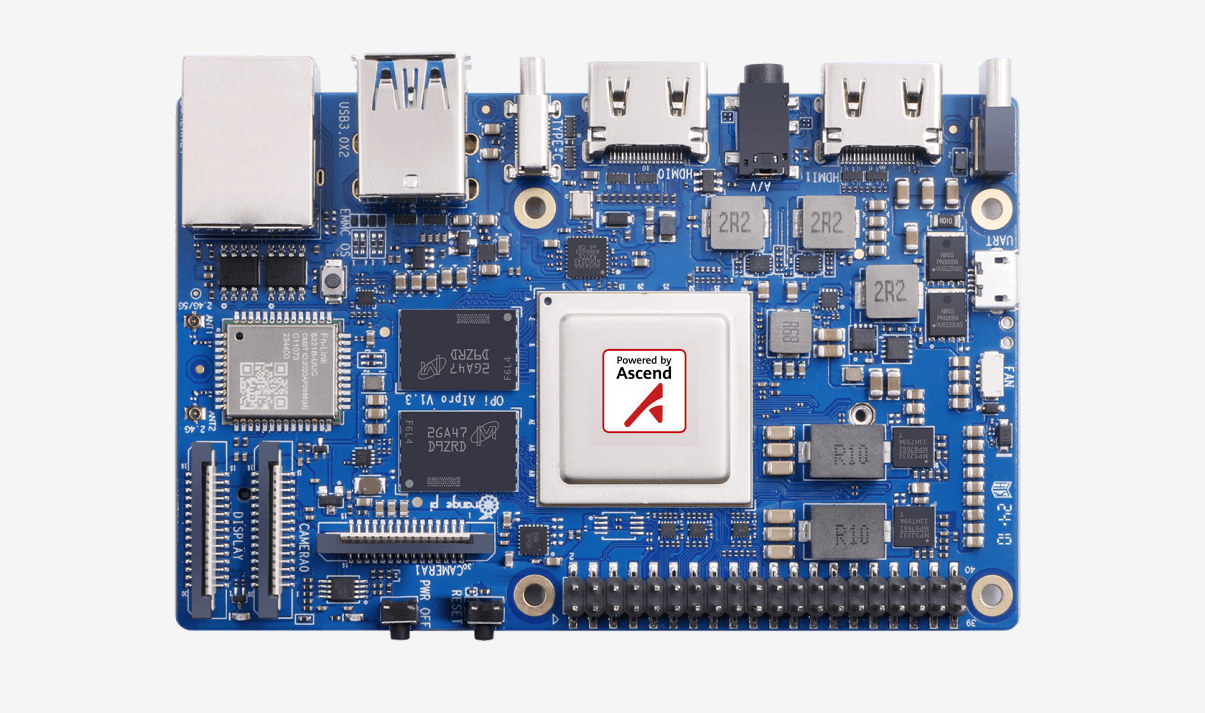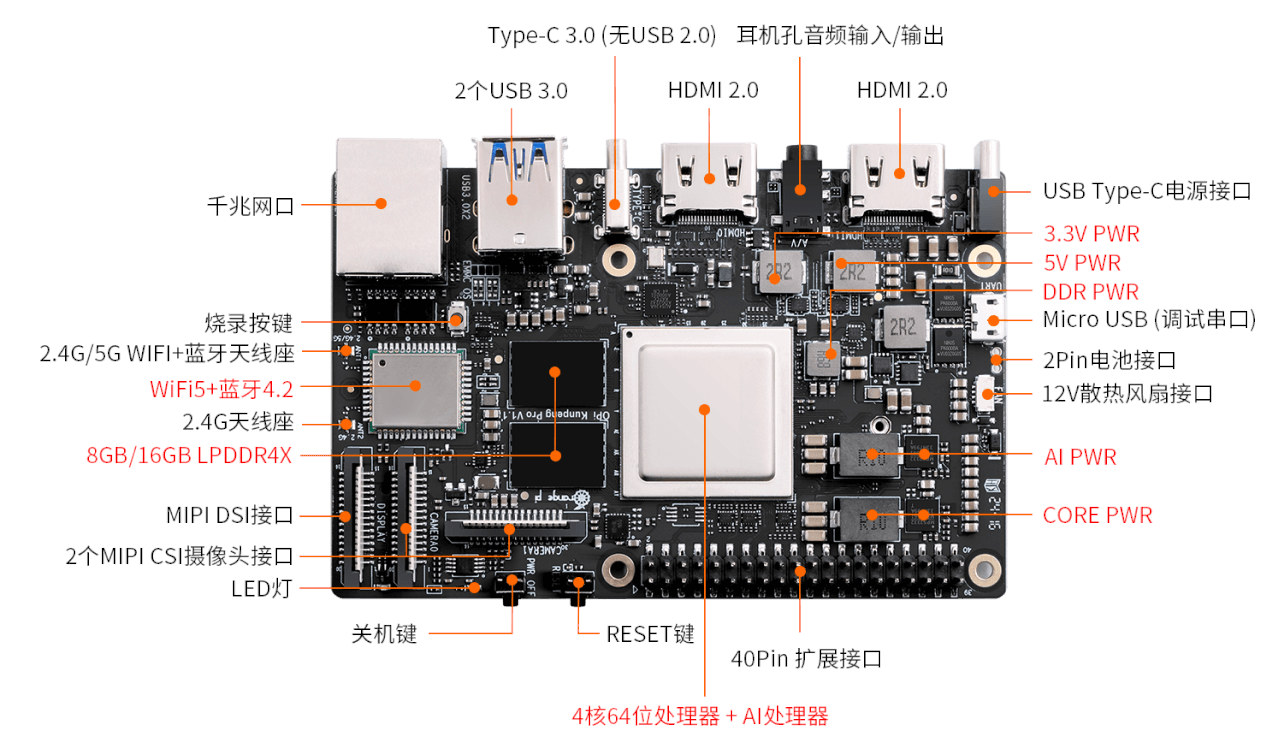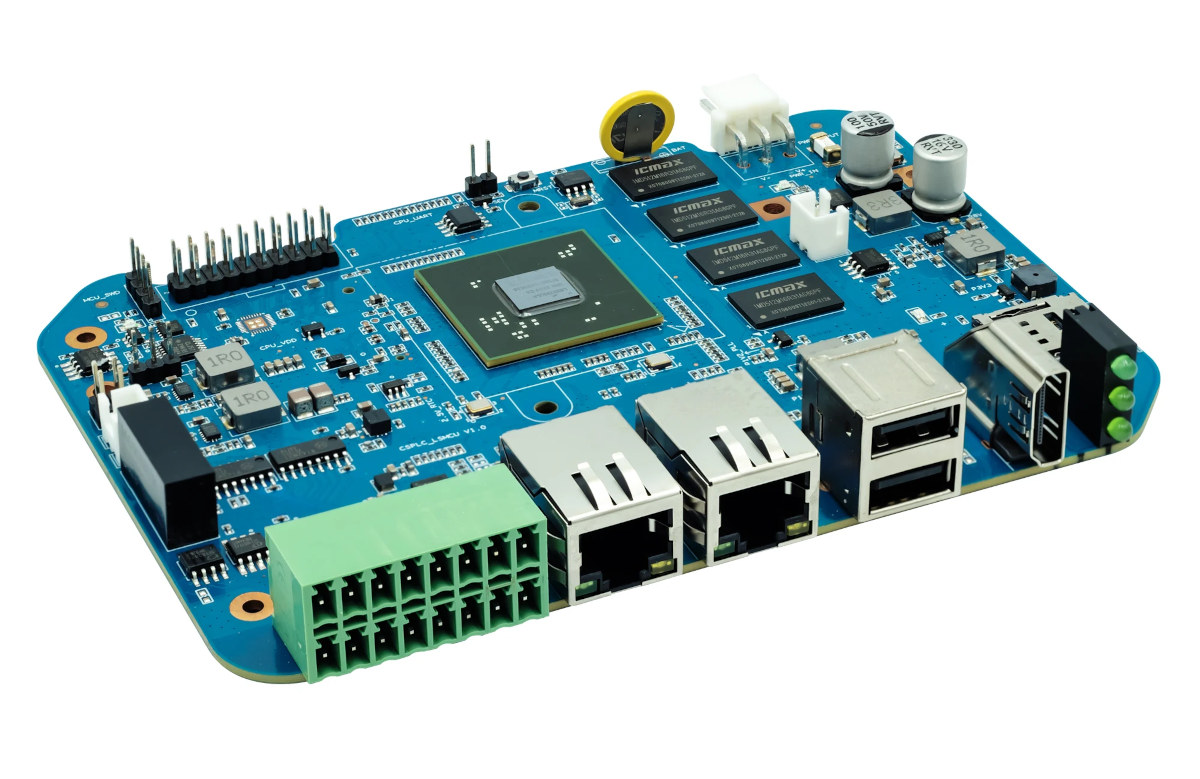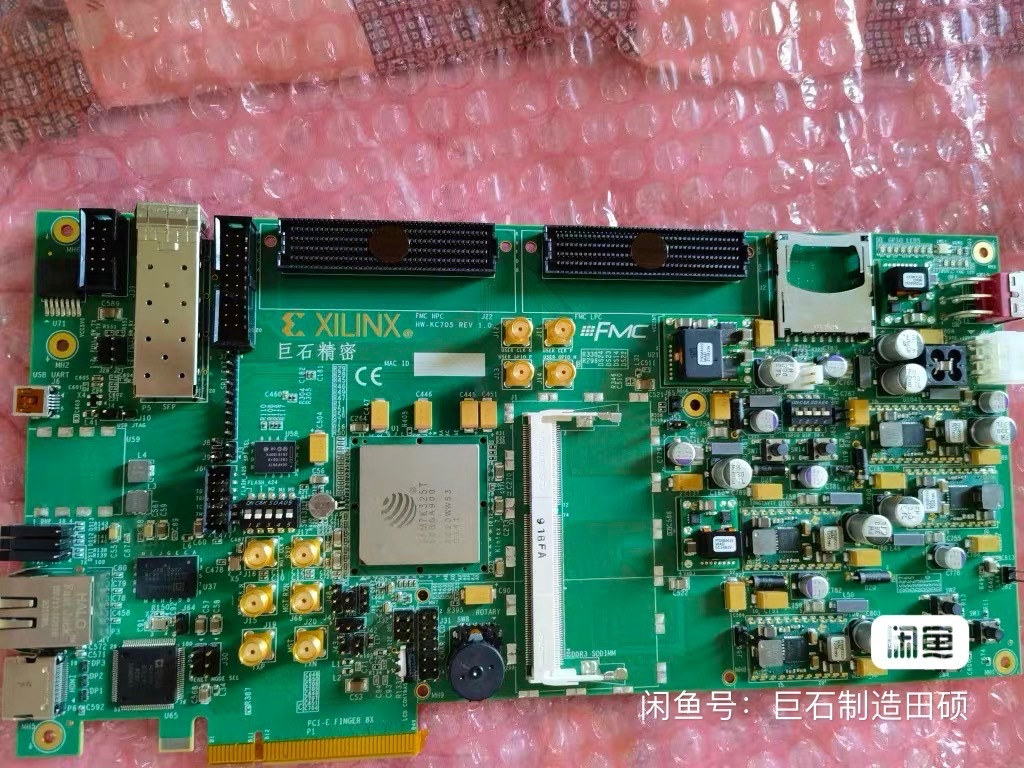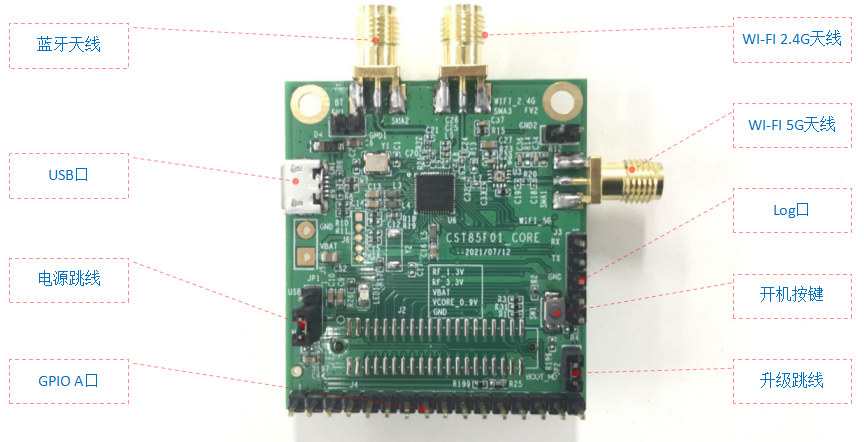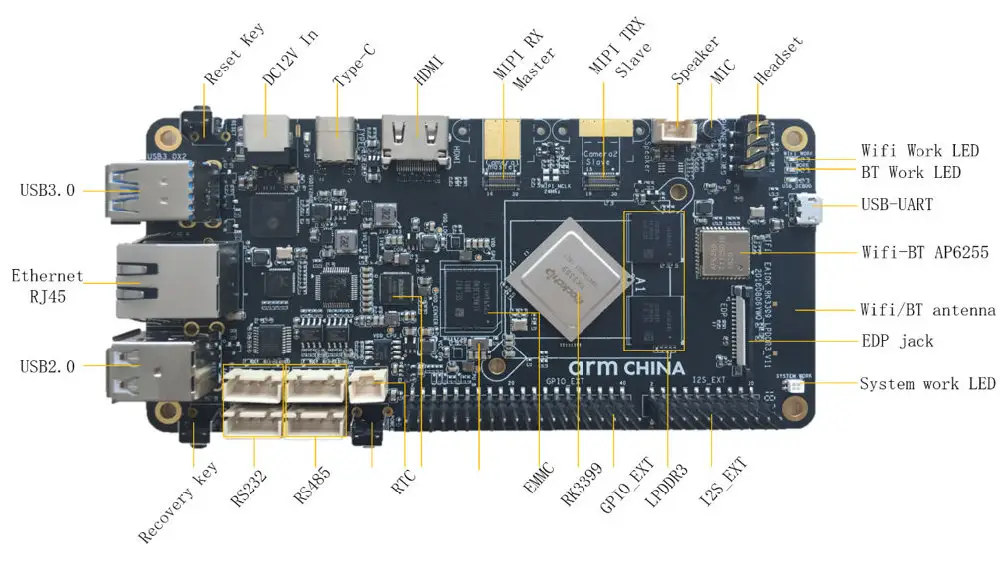Orange Pi AIPro (8T) is a new single board computer for AI applications that features an unnamed Huawei Ascend AI quad-core 64-bit processor delivering up to 8 TOPS (INT8) of AI inference performance, although there’s also a 20 TOPS (INT8) variant of the SoC. The SBC comes with up to 16GB LPDDR4X and a 32MB SPI flash but also supports other storage options such as a microSD card, an eMMC flash module, and/or an M.2 NVMe or SATA SSD. The board also features two HDMI 2.0 ports, one MIPI DSI connector, a 3.5mm audio jack, two MIPI CSI camera interfaces, Gigabit Ethernet and WiFi 5 connectivity, a few USB ports, and a 40-pin GPIO header for expansion. Orange Pi AIPro specifications: SoC – Huawei Ascend quad-core 64-bit processor delivering up to 8 TOPS (INT8) AI performance and equipped with an unnamed 3D GPU; Likely Ascend 310B with Arm Cortex-A76 equivalent […]
Orange Pi KunPeng Pro SBC features a quad-core Huawei CPU with an 8 TOPS AI accelerator
Orange Pi KunPeng Pro is a single board computer powered by an unnamed KunPeng quad-core processor from Huawei that features an 8 TOPS NPU for AI workloads. It’s not the first time Orange Pi has launched an SBC based on a Huawei SoC, as the company introduced the Orange Pi AIPro last year with another unnamed Huawei Ascend SoC with a 20 TOPS NPU. The new Orange Pi KunPeng Pro board has basically the same layout as the AIPro model, but with lower specs overall, although it still comes with 8GB or 16GB LPDDR4x memory. Orange Pi KunPeng Pro specifications: SoC – Unnamed Huawei Kunpeng quad-core 64-bit SoC with unnamed GPU, 8 TOPS AI accelerator System Memory – 8GB or 16GB LPDDR4X Storage 32MB SPI flash connector for 32GB, 64GB, 128GB, or 256GB eMMC flash module MicroSD card slot M.2 2280 socket for SATA/NVMe drive Video Output 2x HDMI 2.0 […]
Loongson 2K1000LA dual-core LoongArch processor powers industrial SBCs and IoT gateways
Loongson 2K1000LA is a 1GHz dual-core 64-bit LoongArch processor designed for industrial applications with gigabit Ethernet, SATA, two PCIe interfaces, two digital video outputs, audio interfaces, USB 2.0, and others all in a 1 to 5W power envelop. It is found in Loongson’s own development board and Banana Pi BPI-5020 2K1000LA SBC. The LoongArch architecture was first introduced in 2021 as an alternative to Arm, x86, and RISC-V, and heavily inspired by MIPS with extra instructions. Some of the first LoongArch processors were the Loongson 3A5000 and 3C5000 SoCs for desktop computers and servers respectively, and now, the company has launched a lower-power processor for industrial applications, such as IoT gateways, with the 2K1000LA. Loongson 2K1000LA specifications We only have some basic specifications from the product page on Loongson’s website.; CPU – 2x 64-bit LoongArch cores clocked at 1GHz FPU – 128-bit vector unit Cache 32KB L1 instruction cache 32KB […]
Betavolt BV100 3V nuclear battery aims to deliver 100 microwatts for over 50 years
Btavolt BV100 is a nuclear battery that never needs to be charged and designed to output 3V/100µW (microwatts) for over 50 years for the aerospace industry, AI equipment, medical devices, MEMS systems, advanced sensors, small drones, and micro-robots. At 15x15x5mm, the 50-year nuclear battery is fairly small although 100 microwatts is not a lot of power… That’s only the first step, however, as the Chinese company plans to launch a 1W nuclear battery, and says that if (government) policies allow, nuclear batteries should eventually enable smartphones that never need to be charged and forever fly drones… How does that all work? First, as Betavolt states in its press release (in Chinese), it’s not exactly new technical as in the 1960’s, the US and the USSR used betavoltaic batteries for the space programs. But those were relatively large and heavy, operated at high temperatures, and were expensive. Wikipedia mentions that one […]
Fudan Micro JFM7K325T is a clone of AMD Embedded Kintex 7 325T FPGA
Shanghai Fudan Microelectronics Group, also known as FMSH, has designed a clone of the AMD Embedded (previously Xilinx) Kintex 7 325T FPGA found in some boards and modules in mainland China. We are used to seeing clones or fakes of the STM32 microcontrollers, but somebody called “whatever” on Twitter noted a full-featured board based on a clone of the Kintex-7 325T FPGA with 326,080 LUTS and 16 transceivers. Twitter users were quick to point out the board was based on Fudan Micro JFM7K325T, and that it was indeed a clone of the Kintex 7 325T FPGA. The company describes itself as a “domestic leading company specializing in the design, development, production (testing), and system solution provision of super-large-scale integration”, but the company’s website does not have any information about the JFM7K325T chip. I could not find the board above online, but I still found MagicChips’ MC-JFM7K325T core board based on […]
Auspicious Machine modular handheld Linux PC with keyboard takes various Arm-based SoMs
The “Auspicious Machine” may look like a Blackberry phone, but it’s actually a handheld Linux PC with a built-in QWERTY keyboard and a 3.5-inch display that can be powered by a range of system-on-modules (SoM). The computer, whose name can also be translated as the “Auspicious Phone”, can be used as a Linux terminal with GPIO control, and for gaming with Linux distributions such as Batotera or RetroBat with the D-Pad and ABXY buttons found on the device. Auspicious Machine specifications: Supported SoMs Bigtreetech CB1 with Allwinner H616 quad-core Cortex-A53 processor and 1GB DDR4 Raspberry Pi CM4 with Broadcom BCM2711 quad-core Cortex-A72 processor, up to 8GB LPDDR4, up to 32GB eMMC flash Radxa CM3 with Rockchip RK3566 quad-core Cortex-A55 processor, up to 4GB LPDDR4, up to 64GB eMMC flash Banana Pi BPI-CM4 with Amlogic A311D octa-core Cortex-A73/A55 processor with 4GB LPDDR4 and 16GB eMMC flash Storage – MicroSD card socket […]
CHIPSEA CST85F01 480 MHz Cortex-M4 MCU supports dual-band WiFi 6 and Bluetooth 5.0 LE
CHIPSEA CST85F01 is an Arm Cortex-M4F microcontroller clocked at up to 480 MHz and designed for IoT applications with dual-band (2.4/5.0 GHz) WiFi 6 with TWT (Target Wake Time) support, Bluetooth 5.0 LE, and a range of I/Os. Following the recent availability of 2.4 GHz WiFi 6 IoT chips such as Espressif Systems ESP32-C6 and Bouffalo Lab BL616, CHIPSEA CST85F01 offers an alternative with dual-band WiFi 6 connectivity while we are waiting for the launch of the ESP32-C5 RISC-V microcontroller. CST85F01 specifications: CPU core – Arm Cortex-M4F CPU with MPU and FPU @ up to 480 MHz Memory – 992 KB SRAM, SDR/DDR PSRAM interfaces Storage – 752 KB ROM, 8 Mbit to 128 Mbit flash WiFi features 2.4GHz/5GHz Wi-Fi 6 Data rates up to 286.8 Mbps (Tx) and 229.4 Mbps (Rx) with 20/40 MHz bandwidth Rx sensitivity – -98dBm in 11b mode, -93.5dBm in MCS0 HT20 mode Tx power […]
Open AI Lab EAIDK-610 devkit targets computer vision education with OpenCV
Open AI Lab EAIDK-610 is an embedded AI development kit powered by a Rockchip RK3399 processor, recently added to Linux 6.1 and described as “popularly used by university students” in the kernel changelog. But I had never heard about it, and it turns out it’s because it’s popular with students in China, and most documentation is written in Chinese. The development board is equipped with 4GB LPDDR3, a 16GB eMMC flash, HDMI video output, Gigabit Ethernet and WiFi 5, a few USB ports, a 40-pin GPIO header, and more. EAIDK-610 specifications: SoC – Rockchip RK3399 System Memory – 4GB LPDDR3 Storage – 16GB eMMC flash and MicroSD card slot Video Output HDMI 2.0 up to 4Kp60 MIPI DSI up to 1280×720 @ 60 fps 4-lane eDP 1.3 Audio – Speaker header, built-in microphone, 3.5mm audio jack, I2S header, digital audio via HDMI Camera I/F – 2x MIPI CSI up to […]


